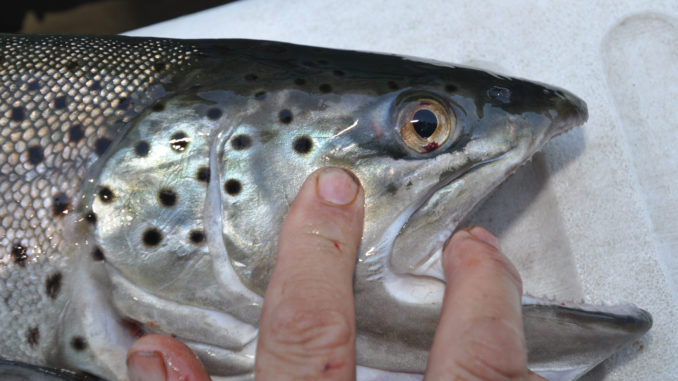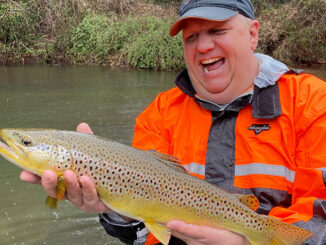
The N.C. Wildlife Resources Commission implants elastomer tags into cheeks of all rainbow and brown trout stocked into Apalachia Lake.
The first four years of stockings included 1,500 10-inch fish and 1,000 14-inch fish of both species annuallye. Tags were red in 2012, blue in 2013, yellow in 2014 and orange in 2015. The 10-inch fish were tagged in the left cheek and 14-inch fish were tagged in the right cheek. All were implanted with metal tags in the opposite cheek to allow biologists to determine whether a trout is a stocked or a wild fish in the event the tag color fade over time.
Apalachia Lake is an experimental trophy fishery, giving the Commission flexibility in management in terms of the number of fish it stocks and adjusting creel limits or other regulations. It is currently undesignated trout water.
The Commission will adjust future stockings and regulations in response to angler surveys and sampling data. The main thing fishery managers will be studying is the growth rates of the trout; cheek tags are a great way of determining how large a fish has grown during a specific time interval. At some point, growth rates will slow as their population achieves a balance, with the main forage base of blueback herring.





Be the first to comment